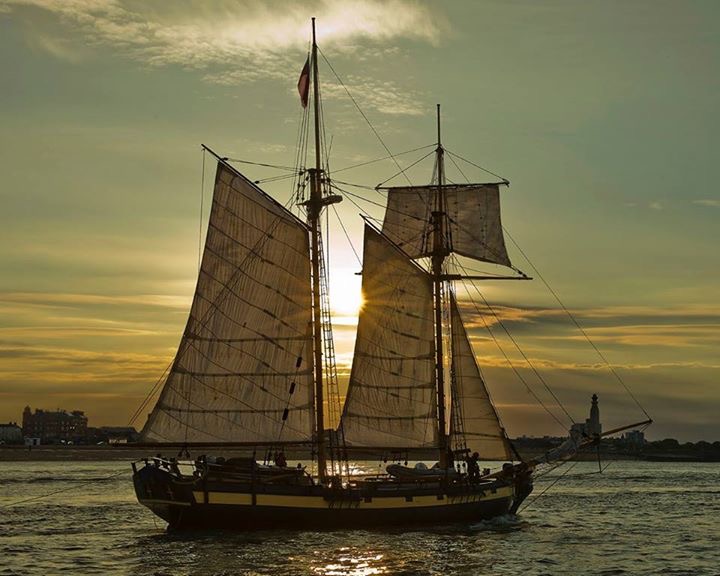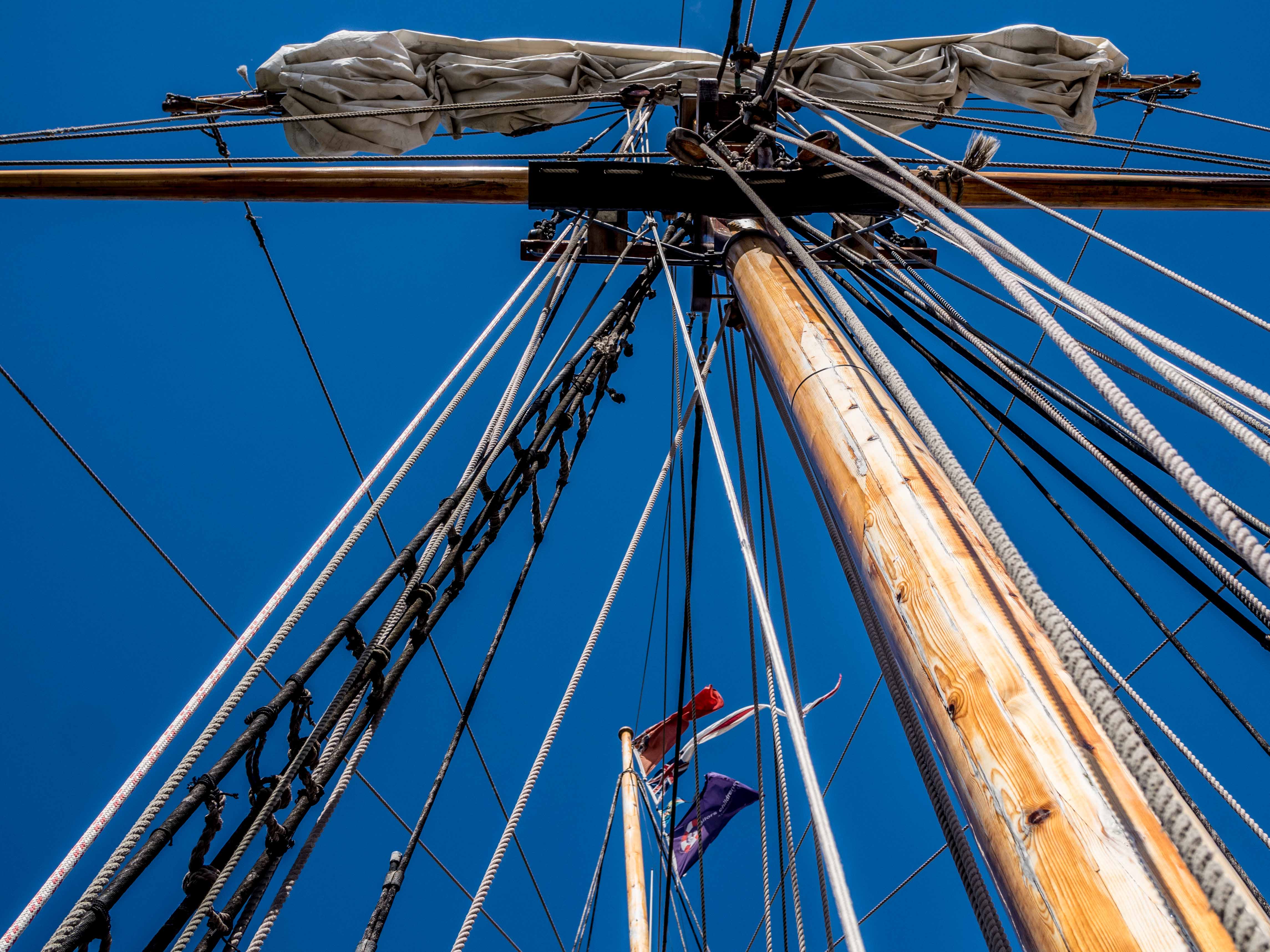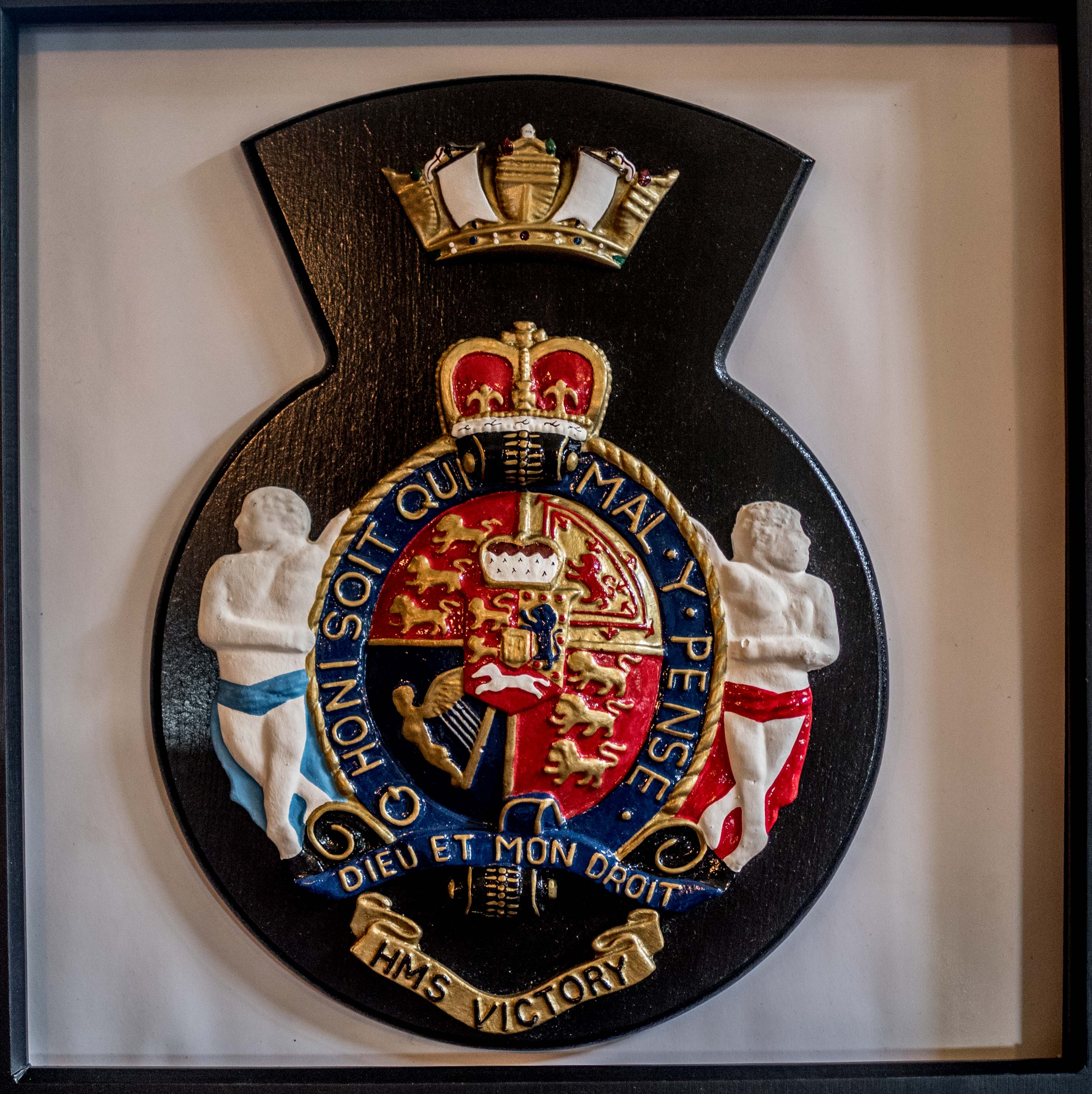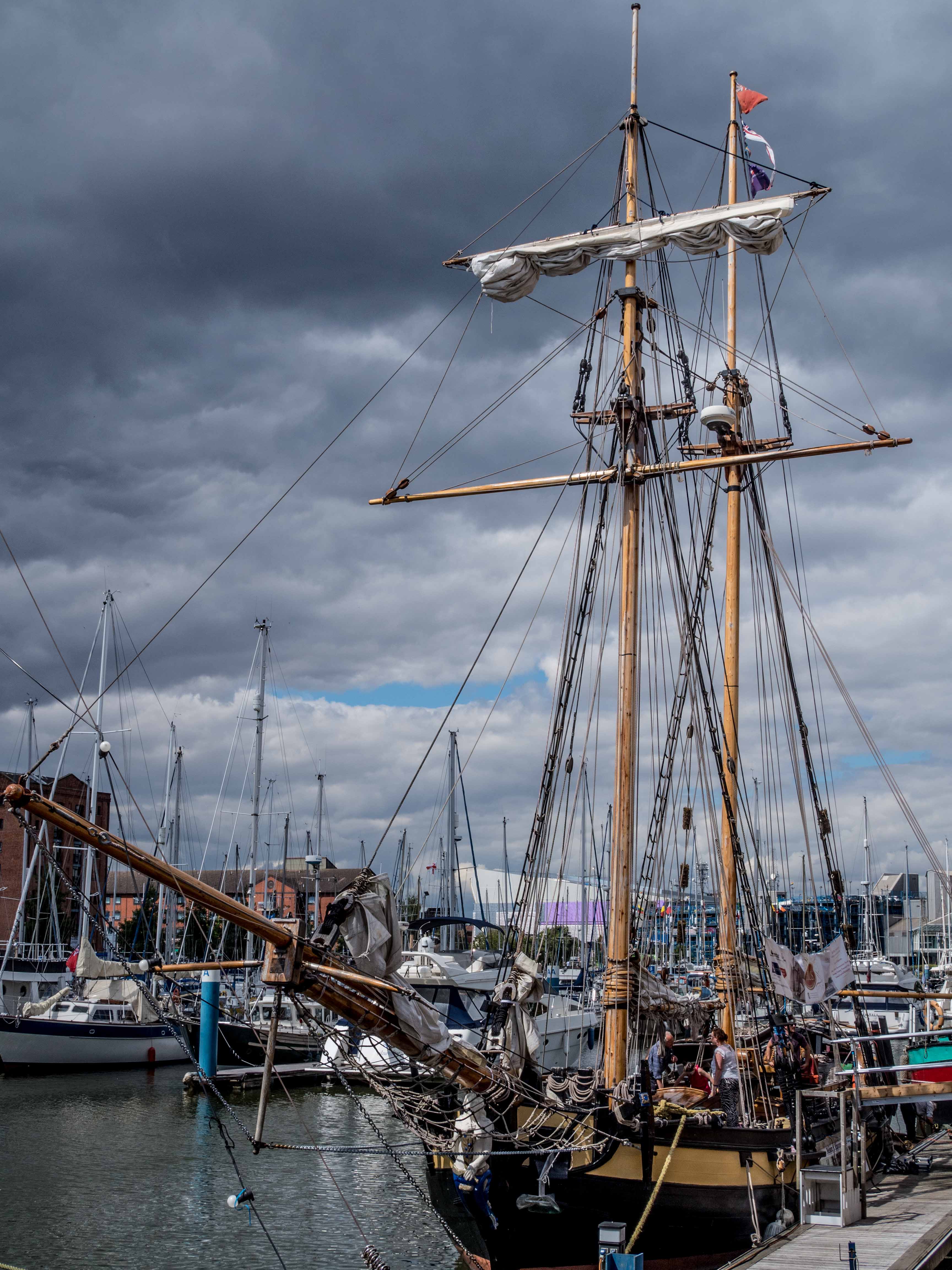This beautiful vessel will sail down the River Hull and into the Humber Estuary as part of the Open Bridges journey. Thank you to John Medland and Captain Mal Nicholson for the fascinating history of the HMS Pickle – the swiftest ship in Nelson’s Navy.
During the Battle of Trafalgar on 21st October 1805 lightly gunned but very manoeuvrable HMS Pickle rescued survivors from sinking ships during the battle. Achille, a French ship was ablaze and Pickle’s boats rescued more than 140 people, including Jeanette who was the wife of one of the Main Topmen, but more of that later.

Commanded by Lieutenant John Richards Lapenotiere, HMS Pickle was not directly involved in the Battle of Trafalgar but was certainly in the midst of it. Given the size of Pickle and the fact that she had a crew of just 40 it is remarkable that Lapenotiere was not only able to rescue so many but that they were then able to prevent the prisoners from taking Pickle as their own, which was attempted.
On the morning of the 26 October 1805, Lapenotiere was signalled to come aboard Euryalus where he received written orders from Admiral Collingwood to sail for Plymouth with dispatches with news of the success of the battle but the death of Lord Nelson.
Lapenotiere set off immediately, but encountered very severe weather, stores and cannons were thrown overboard to prevent the ship from foundering.
On 4th November 1805 Pickle finally reached Falmouth, where Lapenotiere was rowed ashore in Pickle’s boat. From this point Lapenotiere set off on his now famous post-chaise using at least 21 changes of horses to travel more than 270 miles in 37 hours and costing £46.19s.1d, which was more than six months wages for a Lieutenant. – The route taken is now commemorated as the Trafalgar Way.
Lapenotiere reached his goal of the Admiralty at around 1am on the 6th November and announced to William Marsden, First Secretary to the Admiralty; “Sir, we have gained a great victory, but we have lost Lord Nelson”.
There is an interesting story that Lapenotiere rode through the night to Windsor to inform George III of the victory, where he was granted an immediate audience with the King at breakfast. Here he was said to have recounted graphic details of the Battle using cutlery and tableware to show the manoeuvres of the different ships. However there is no official record of this.
Lapenotiere eventually received £500 and promotion to Commander for his service.
Pickle Night is celebrated by the Royal Navy and other navies around the world on or about the 6th of November every year by warrant officers and chief petty officers in senior rates messes.
History
The first HMS Pickle was launched in 1795 and was based in the Caribbean, it was a slow and cumbersome ship. Lord Seymour who was commanding HMS Pickle wanted to acquire a better vessel for the tasks he had. The Admiralty refused but Seymour swopped the original vessel and bought a fast gaff rigged Schooner called Sting, which had been built in Bermuda in 1799. This became HMS Pickle.
When recalled to England – it was realised that the HMS Pickle that returned was not the HMS Pickle that had departed England. However the performance of the vessel was so good that the Navy had Naval Architects draw up plans from the new HMS Pickle which became the Adonis Class.
Recent research in the Hull History Centre has shown that HMS Pickle was sent up to Queens Dock in Hull to be refitted and re-equipped with new cannons. Here from Hull, HMS Pickle made several secret fast despatch runs to Portugal and back during the Napoleonic war.

Present Pickle
It was from the plans drawn up by the Navy in 1802 for the Adonis Class schooners that five vessels were built in the Baltic in 1995 to commemorate the tercentennial of Peter the Great’s navy. One of these ships became HMS Pickle converted in Gloucester Docks which took part in the Sea Britain celebrations in 2005 to mark the 200th anniversary of the Battle of Trafalgar acting as a proxy for HMS Victory and visited ports around the south coast. During this period the BBC produced a film about HMS Pickle with Tom Cunliffe called “The Boats That Built Britain”. Later Pickle was based in Ocean Village, Gibraltar, where she was bought by Mal Nicolson in 2014.
The voyage northwards by Mal from Gibraltar to England had its share of adventures. The years of Mediterranean sun had taken its toll on the spars, rigging and hull. Both masts snapped in rough seas ironically off Trafalgar and Pickle had to put into Puerto Sherry in Spain. Later the propeller fell off the shaft and lodged on the Skeg and Pickle again put in for repairs. It was also decided to replace defective wood throughout the ship and to remove remanufacture and refit the rudder. Fortuitously the Port of Call in Portugal had a highly skilled shipwright called Rui Pinto (Rui Pinto & Filos from Quartiera) whose family had been building wooden sailing vessels for over four hundred years. Over a period of six months over 23 tonnes of wood was replaced.
Underway again the anchor winch ripped out of the foredeck in a stormy night in Sines, pushing on, more storms at A Coruna and repairs to sails and anchor winch at Santander then across the Bay of Biscay, the new Pickle showed how fast she could sail. At stopover in France Pickle’s crew thought they might get a rather frosty reception from the local population, but because of Pickle’s role in rescuing over 140 crew of the French Ship Achille, there were over forty thousand descendants from these survivors. Jeanette was one of those rescued and was pulled from the seas wearing only a hair ribbon and a pair of earrings! An English officer in the ships boat gave her his coat to wear.. Happily she found her husband on board Pickle.
On the 25th September 2015 Pickle was escorted up the Humber by the Royal Navy Patrol Vessel HMS Explorer, to Hull Marina, where she is currently berthed.
Fittingly on the evening of 22nd September 2017, HMS Pickle will muster with Beverley Motor Barge Syntan and Humber Keel Comrade at the former entrance to Queen’s Dock on the River Hull. From whence hundreds of years ago she sailed on her secret missions to Portugal acting as a spy ship for Admiral Lord Nelson delivering dispatches to Lisbon.
August 2017: Captain of the HMS Pickle Mal Nicholson and his wife Val were recently invited by the Royal Navy to meet and cement the relationship between HMS Victory and HMS Pickle when they were presented with this beautiful plaque.


Open Bridges is a whole tapestry of threads. It’s a celebration of Hull’s lifeblood, the River Hull, 13 movable bridges, the vessels that use the river and the heritage & culture that have grown up in both East and West Hull.
Project concept Rich & Lou Duffy-Howard